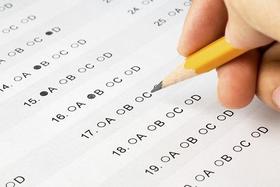Public school was established to provide a free education for everyone living in the United States. It has been dubbed the great equalizer, providing the same opportunities for all students, regardless of race, background or income level. However, some public schools are bucking this philosophy, at least for students who live outside their immediate boundaries. One of the recent trends catching fire in public schools across the country is the charging of tuition to students living outside district boundaries. Fair? It depends on who you ask.
Tuition Spreading, Rates Increasing
reports that many school districts across the country charge tuition to students who want to attend the school from outside the district. What is interesting about this latest trend is the amount of tuition charged, which is increasing exponentially at some in-demand schools. While the typical going rate for out-of-district transfers ranges from a few hundred to a few thousand dollars, some schools charge students $10,000 or more for a year of education.
The new rates are comparable to those at private schools, which some public institutions willingly admit they are trying to compete with. The school board president for the Rye Brook District in New York told Business Insider, “You get a first-rate education. You hear about charter schools. You hear about private schools. You hear about parochial schools. This is just another option.”
Rye Brook recently announced plans to charge tuition rates of $21,500 for slots in middle and high schools for the upcoming school year. The going rate for K-6 schools will be more than $19,000 per year. Rye Brook believes it has much to offer students in exchange for the lofty tuition rate. According to , the schools feature many awards, impressive athletic facilities and plenty of technology resources.
While Westchester County appears to be charging high rates for education, other districts in the area are charging even more. Edgemont and Bronxville are both cited in the Business Insider report as charging tuition rates ranging from $23,000 to $28,000 per year. However, Rye Brook is taking their tuition policy to the next level.
In addition to increasing rates, the district has also adopted a strategy of advertising for their open slots. The district recently sent out direct mailings to homes within a 15-mile radius of the school. Given that Greenwich, Connecticut, falls within that radius, the school district may very well attract students from out of state and outside their district lines.
Texas to Join the Tuition Trend
New York isn’t the only state to see increasing tuition rates for in-demand public schools. reports that one of the top-ranked districts in the state, Lovejoy Independent School District, has decided to begin charging tuition to students from outside the district. The Lovejoy Board of Trustees recently voted on rates of $8,000 per year for students in grades K-6 and $10,000 annually for middle and high school students.
The board settled on these amounts after comparing rates of private schools in the area. They also studied the amount of school property tax residents of the district pay annually. The board also had to abide by the Texas Education Code, which states schools can charge tuition to students out of the district as long as the amount spent on each student is more than the total in-state funding.
This video reports on a Michigan district planning to charge tuition.
Boils Down to Money
The reason behind Lovejoy’s decision to move to tuition boiled down to a single factor – money. The school district lost approximately $3 million in state funding in 2011, which has not returned. This year, the district hoped to recoup a decent percentage of its funding but discovered the state would only be restored about 20 percent of its total amount.
That amount was insufficient to accommodate district growth, including the construction of a new middle school. This left the district in a quandary over where to cut more from an already tight budget.
“We were at a place where we had three choices,” Ted Moore, superintendent of Lovejoy, told CBS. “We could look at a tax increase, we could make what I consider to be draconian cuts to our programs, or we could look for an innovative strategy.”
That innovative strategy was the new tuition rates, which the district hopes will bring around $500,000 to schools over the next school year. The district is hoping for a total of 200 transfer students into their districts but will place a cap on 15 transfer students per grade level. With some of the highest standardized test scores in the state and a 0% drop-out rate, district officials believe the tuition will be well worth the money for some students.
Moving West
On the West Coast, Riverdale School District in Oregon is another highly sought-after district that has decided to charge tuition to bring in more students. The annual bill of up to $11,900 per student has helped the district preserve important programs like art and music. It has also ensured class sizes remain at around 23 students, according to .
The system appears to work for students inside and outside the district. When the state legislature recently looked at a bill to prohibit the charging of tuition by public schools, plenty of residents came out in support of the Riverdale policy.
Tuition is not common at public schools but is becoming more prevalent throughout some of the hottest school districts nationwide. As the public school climate becomes more competitive, more districts may take up tuition policies.
Questions? Contact us on Facebook @publicschoolreview.










